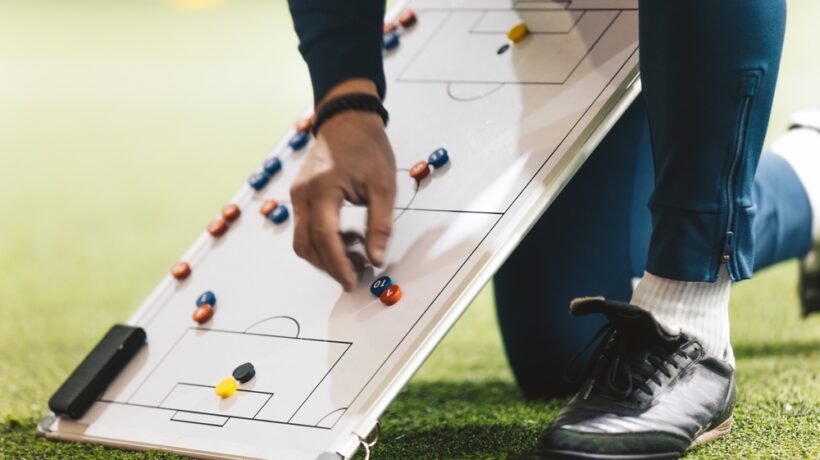
Do you find yourself not wanting to put the same session on back to back? Or do we move on to a new topic every week?
How do we spot player development?
Player development is such a complicated thing because at the heart of it all we have to observe improvements in our players. This is where we can get lost in our own bias. If you have ever participated in a session or speak to a player, they will tell you the same thing – it takes them time to work out the parameters, rules, area size and how they can be successful within the practice. Just as they are getting used to it the coach will then change the parameters by adding a progression or moving onto a new session. We have all done this as coaches too. However we are doing it because we feel the players are understanding the topic and developing their understanding. More likely is that they are just getting used to what they are being asked to do and now they can start to develop their understanding.
How quickly do players really learn?
Sorry to potentially hurt any coaches ego but is learning and developing their understanding of a topic going to be completed after 30 minutes of a drill or 90 minutes of a full session?
We can certainly plant the seeds in that time and some may pick it up really quickly. However we need to revisit it and observe if players have really understood it. We also need to pitch new challenges in the same environment to test their understanding further. All of these strategies will really test a players understanding and just whether they have grasped the layout of a session.
Ways to replicate sessions
Lots of professional clubs have ‘best practice’ sessions that every age group (or groups of age groups) use within their delivery. This is so that players understand them, can even set them up without the help of the coach, and really work on their development as players. These are usually decided by the staff as a group and mutually agreed. However as a beginner coach this could be as simple deciding on 6-10 sessions that are important to you or that have received good feedback from players previously.
Coaches could start the beginning of the next session with the end of the previous to see if players still remember the learning from it. This will give players the chance to show what they have learnt but also give coaches the chance to observe to help plan for future.
Another way to help with replicating sessions is to repeat session design and structure but change the topic within it. That way players don’t have to spend time getting used to the layout but instead can focus on the topic itself.
Why not get player feedback?
Player feedback is such an important part of what sessions to use going forward. At the end of the session why not ask them – did you enjoy that? What worked? What didn’t you understand? At least that way you know whether the session is worth repeating or not. If players didn’t enjoy it or understand it, then you can decide if you want to tweak it before you try it again. If they enjoyed it, why wouldn’t you want to use it again.
In summary, we as coaches can often shy away from using the same session again to keep things fresh for players. However we therefore need to be sure that what we are seeing with our observations is players understanding the topic rather than just understanding the rules of the practice. Repeating sessions are a great way of consolidating and testing their learning of a topic but must be done in partnership with the players.